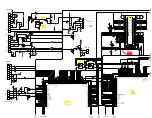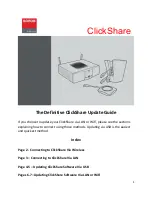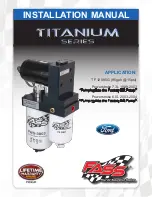
67
on circumstances and which sensor has failed, the change in the engine’s behavior may be very
obvious or it may be hardly noticeable. If you notice any change in how the engine is running, it’s a
good idea to check the blue CRANK/DIAG LED on the ECU (it will flash rapidly) or the “Error” LED
displayed on the hand-held’s Live Dashes. These both signal that an error code has been set. You can
also go directly to the Codes section of the hand-held. Even if the engine is running well, an error code
will prevent further learning. Also, the problem that caused the error code to be set may have a larger
effect later under different conditions.
Keep in mind that error codes are cleared when the ECU is reset (key-off for approximately 5-10
seconds). So if you suspect a problem, it is best to check for error codes before powering down the
ECU. A persistent problem (sensor disconnected, for example) will set an error code when the ECU is
keyed-on. But an intermittent problem may only be detected while the engine is running.
Load-Indexed Speed Density
The EZ-EFI
®
system operates with a fueling strategy known as Load-Indexed Speed Density. Just like
a traditional Speed Density system, it uses manifold pressure, air temperature and engine speed, along
with other considerations to calculate the proper amount of fuel to inject. At wide open throttle,
manifold pressure is equal to the ambient atmospheric pressure. If you drive at high altitude, the ECU
will see a lower manifold pressure at wide open throttle (since atmospheric pressure is lower) than it
would at sea level. A traditional Speed Density strategy uses manifold pressure to locate values in
various lookup tables. So the engine will operate differently at high altitude than it would at sea level.
The EZ-EFI
®
system’s Load-Indexed Speed Density avoids this inconsistency by using a calculated
“Load” for table lookups instead of raw manifold pressure. This “Load” is a comparison of the current
manifold pressure vs. the ambient atmospheric pressure. This means that at any altitude, full throttle
(or any other throttle position) operates on the same parts of the lookup tables. At full throttle at high
altitude, the ECU will still see manifold pressure that is lower than it would at sea level. But because
that lower manifold pressure is equal to the ambient atmospheric pressure, it is still considered 100%
load.
This all happens behind the scenes and requires no special attention from the driver.
Содержание 30400-KIT-EZ-EF
Страница 11: ...11 In Tank Fuel Pump System Layout...
Страница 17: ...17 In Line Pump Fuel System Layout...
Страница 56: ...56 Dash 1 Dash 2 Dash 3...
Страница 69: ......
Страница 70: ......




































